
Table of Content
- Introduction
- Understanding Urban Farming: What Is It?
- Benefits of Urban Farming for Cities and Communities
- The Role of Cities in Sustainable Agriculture
- The Benefits of Urban Farming for Urban Dwellers
- Technological Innovations in Urban Farming
- Challenges of Urban Farming
- The Future of Urban Farming: Opportunities and Potential with HTSFarms
- Conclusion
- References
Introduction
Urban farming is becoming an increasingly important part of the conversation on sustainable agriculture. As cities grow and populations swell, urban farming has emerged as one of the potential solutions to address issues like food security, climate change, and the need for greener, more resilient cities. Traditionally, agriculture has been seen as something tied to rural areas, but with technologies and sustainable practices, urban spaces are beginning to take on a more active role in food production.

Cities are no longer just consumers of agricultural products; they are becoming places where food is grown, nurtured, and harvested. This shift is being driven by a number of factors: the need for fresh, local produce, rising concerns about climate change and food systems, and the increasing disconnect between urban populations and the source of their food. Urban farming is helping to bridge that gap, enabling urban dwellers to reconnect with the food they eat while fostering sustainability.
Urban farming also holds great potential for empowering marginalized communities, creating local jobs, and offering new economic opportunities in a changing world. As climate pressures grow, cities need innovative solutions to help ensure food systems are more resilient.
Understanding Urban Farming: What Is It?
Urban farming refers to the practice of cultivating, processing, and distributing food within urban areas. Unlike traditional rural farming, urban farming takes place in the heart of cities, often utilizing non-traditional spaces such as rooftops, vacant lots, and even inside buildings. This type of agriculture is diverse, ranging from small-scale community gardens to high-tech vertical farms that use hydroponics or aquaponics to grow food without soil.

Types of Urban Farming:
- Rooftop Gardens: Utilizing the unused space atop buildings, rooftop gardens allow city dwellers to grow vegetables, herbs, and even fruits. They contribute to reducing urban heat islands and increasing green space in otherwise concrete-heavy areas.
- Vertical Farming: This involves stacking layers of crops in a vertical structure, often indoors, where controlled environments like light, temperature, and humidity are adjusted to optimize growth. This method maximizes space and can produce high yields with minimal environmental impact.
- Community Gardens: These are shared spaces where neighbors work together to grow food, exchange resources, and foster a sense of community. They often focus on organic farming practices and can provide access to fresh produce in food deserts.
- Indoor Farming: Indoor farms use controlled environments, typically under artificial lights, to grow food year-round. This can be done in warehouses or converted buildings, offering a solution to space limitations in densely populated cities.
Benefits of Urban Farming for Cities and Communities:
Improved Food Security: Urban farming provides cities with an opportunity to reduce their dependency on external food sources. By growing food locally, cities can become more self-sufficient, reducing transportation costs and food spoilage.
Environmental Impact: Urban farming reduces the carbon footprint of food by shortening supply chains and decreasing the need for large-scale industrial farming, which often involves high levels of pesticide and water usage.
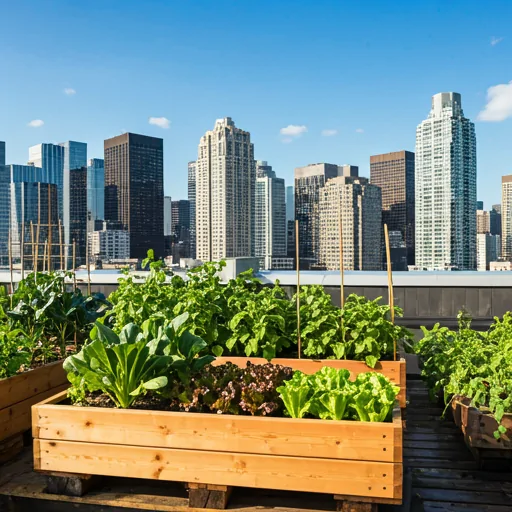
Economic Growth: Urban farms create jobs in urban areas, whether directly in farming or indirectly in related sectors like logistics, education, and technology development. This can stimulate local economies, particularly in areas with high unemployment rates.
Sustainability and Climate Resilience: By growing food locally, urban farming helps reduce the environmental strain caused by traditional agricultural methods, while also promoting practices that protect and enhance urban ecosystems.
Urban farming is not just about food production, it’s an approach that integrates agriculture into the urban landscape, making cities more sustainable and livable.
The Role of Cities in Sustainable Agriculture
Cities play a crucial role in advancing sustainable agriculture, acting as both catalysts for change and consumers of agricultural products. As urban populations continue to increase, urban areas must adapt by embracing practices that contribute to sustainability, resilience, and food security.

How Urban Areas Contribute to Sustainability through:
Reducing the Carbon Footprint: Agriculture in urban settings can dramatically reduce the carbon footprint of food production. Transporting food from rural farms to urban centers often requires significant energy and results in greenhouse gas emissions. Urban farming minimizes this by shortening the supply chain, reducing the need for long-distance transportation and packaging.
Waste Reduction and Resource Efficiency: Urban farming encourages the use of organic waste as a resource. Many urban farms use composting or vermiculture (worm farming) to recycle food scraps into nutrient-rich soil. This reduces waste in landfills and promotes a circular economy within cities.
Water Conservation: Traditional farming methods often rely on extensive water usage, contributing to water scarcity. Urban farming uses water-efficient technologies like hydroponics, aquaponics, and drip irrigation, significantly reducing water consumption compared to conventional farming. These methods are particularly beneficial in regions facing water shortages.
Climate-Resilient Practices: Urban areas are especially vulnerable to the effects of climate change, such as flooding, heatwaves, and droughts. Urban farming integrates climate-smart practices like rainwater harvesting, green roofs, and the use of drought-tolerant crops, helping cities become more resilient to these challenges.

The Benefits of Urban Farming for Urban Dwellers
Urban farming offers significant advantages for individuals living in cities, improving food security, health, and community connections. As cities continue to grow, urban farming provides a sustainable solution to address the challenges of food access and environmental impact.
One of the primary benefits is improving food security. In many cities, particularly in food deserts, fresh produce can be difficult to obtain. Urban farms help reduce this issue by providing local, affordable, and nutritious food directly to urban dwellers. This local food production also reduces reliance on distant agricultural regions, making cities less vulnerable to supply chain disruptions.
Urban farming also provides fresh, local produce, which is crucial for health. Food grown in urban spaces is often more nutrient-dense because it reaches consumers quickly, avoiding the long transportation times that reduce freshness and nutritional value. By offering a variety of fresh fruits, vegetables, and herbs, urban farming encourages healthier eating habits, reducing reliance on processed foods.
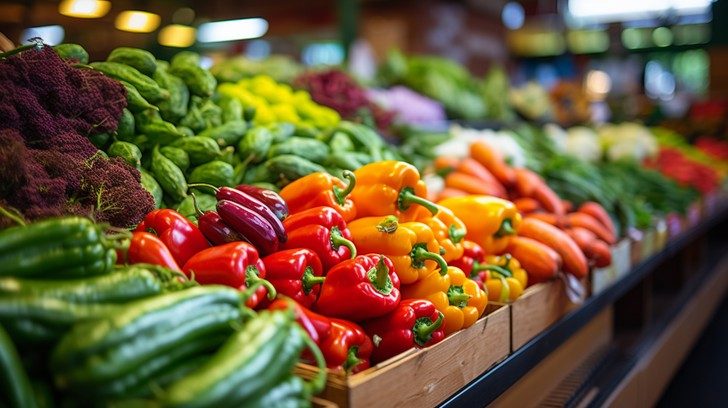
Another key benefit is strengthening community bonds. Urban farms and community gardens act as social hubs, bringing people together to grow food, share resources, and foster cooperation. These spaces build a sense of ownership and pride, while creating opportunities for neighbors to connect and collaborate on sustainability initiatives.
Finally, urban farming enhances mental health. Engaging with nature, even in the midst of a bustling city, has been shown to reduce stress, improve mood, and boost cognitive function. Urban farms offer a peaceful retreat where city residents can escape the noise and chaos of urban life, while also contributing to a meaningful and rewarding activity.
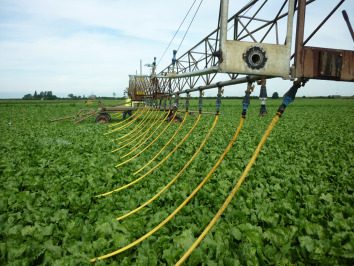
In summary, urban farming benefits city dwellers by improving food security, providing fresh produce, strengthening community ties, and enhancing mental well-being, making cities more resilient, healthier, and connected.
Technological Innovations in Urban Farming
Urban farming is rapidly evolving thanks to advances in technology, which are helping maximize space, increase efficiency, and improve sustainability. These innovations are making it easier for urban areas to integrate agriculture into their landscapes, even in densely populated environments.
One major technological breakthrough is the use of hydroponics and aquaponics, which allow plants to grow without soil. Hydroponics uses a nutrient-rich water solution to feed plants, while aquaponics combines fish farming with plant cultivation in a symbiotic system. These technologies are particularly beneficial for urban farming, as they require less space, water, and land compared to traditional farming methods.
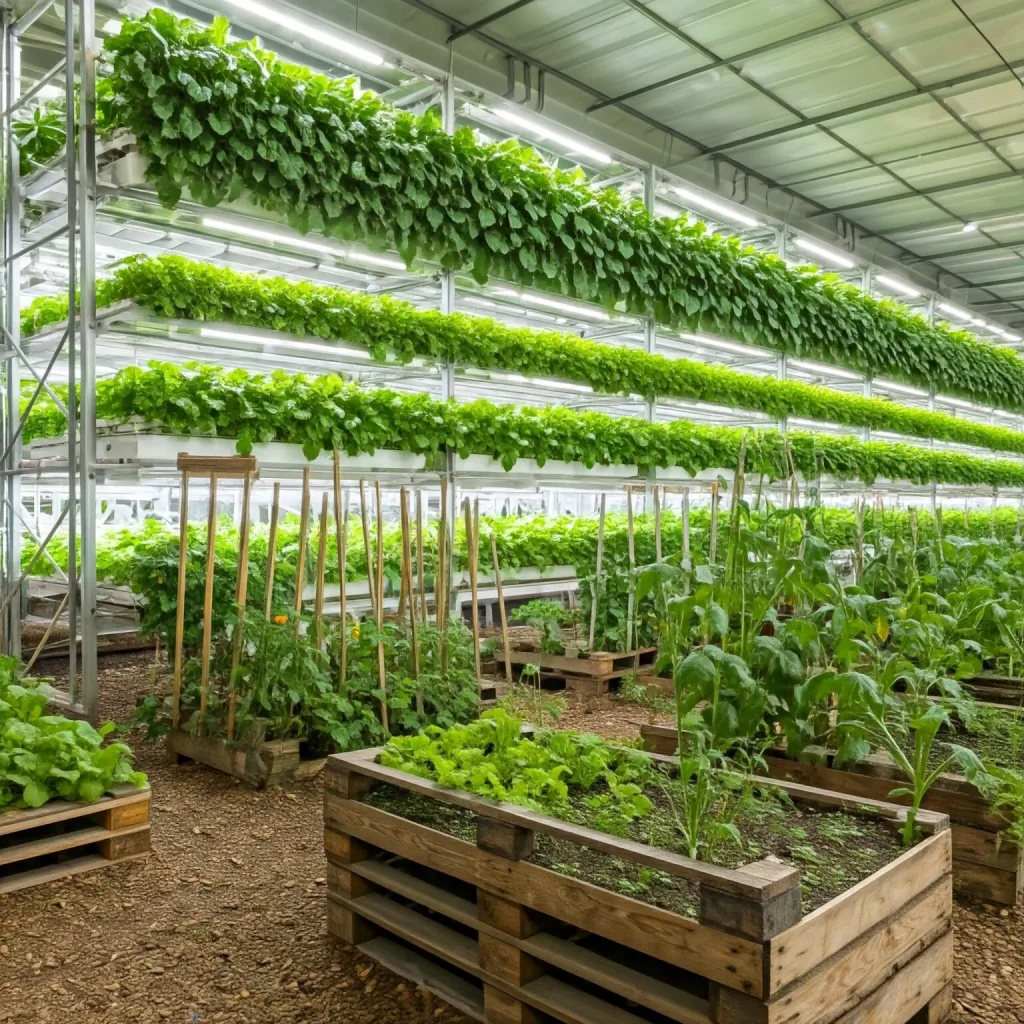
Another key technology is vertical farming, which uses stacked layers to grow crops in a controlled indoor environment. This method maximizes the use of vertical space, allowing urban farms to grow more food in smaller areas. Vertical farms can be placed in abandoned warehouses or even inside buildings, enabling year-round food production regardless of weather conditions. By controlling variables like temperature, humidity, and light, vertical farms can produce food with minimal environmental impact.
Additionally, Internet of Things (IoT) devices are transforming urban farming by providing real-time data on plant health, soil conditions, and water usage. These sensors help farmers monitor their crops more efficiently and make data-driven decisions to optimize growth and reduce waste. Smart irrigation systems, for example, use IoT sensors to deliver water precisely when and where it’s needed, conserving water and ensuring crops are properly nourished.
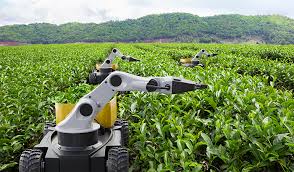
Robotics and automation are also making their way into urban farming. Autonomous systems can plant, water, and harvest crops with minimal human intervention, reducing labor costs and improving efficiency. These robots are ideal for urban environments where labor can be expensive and scarce.
In conclusion, technology is playing a vital role in making urban farming more productive, sustainable, and accessible. From hydroponics and vertical farming to smart sensors and automation, innovations are empowering urban farmers to produce more food with fewer resources, contributing to a more sustainable future for cities worldwide.
Challenges of Urban Farming
While urban farming offers many benefits, it also faces several challenges. One of the main obstacles is limited space. In many cities, land is scarce, and urban farming must compete with other land uses, such as housing and infrastructure. To overcome this challenge, urban farmers are increasingly turning to creative solutions like vertical farms and rooftop gardens.
Climate factors also pose challenges. Urban farms must adapt to the local climate, and extreme weather events, such as floods or droughts, can disrupt production. However, urban farming methods like hydroponics and controlled indoor environments help mitigate these risks by allowing year-round food production.

There are also economic and logistical challenges to consider. Urban farms often face higher costs for land, equipment, and labor compared to rural farms. Additionally, urban farming initiatives may lack sufficient access to funding and resources. Governments and private organizations must step in to provide support and create policies that make urban farming economically viable.
Finally, policy and regulatory barriers can hinder the growth of urban farming. Zoning laws and land use regulations may limit where urban farming can take place. By adjusting these regulations and offering incentives for green infrastructure, cities can encourage the growth of urban farming initiatives.
The Future of Urban Farming: Opportunities and Potential with HTSFarms
Urban farming is poised to play a significant role in shaping sustainable food systems in cities. As urban populations grow, there is an increasing need for local, resilient food production. HTSFarms, a leading agricultural e-commerce platform, is contributing to this movement by providing technology-driven solutions to make urban farming more accessible and efficient.
HTSFarms is helping urban farmers integrate climate-smart agriculture and sustainable practices through its innovative platform by providing all necessary urban farming equipment, quality inputs, several training and consulting services. By providing access to knowledge of technologies like hydroponics, vertical farming, and drip irrigation, HTSFarms is enabling urban areas to optimize limited space while conserving water and resources.

HTSFarms is also committed to gender inclusion and the empowerment of marginalized communities. By creating new economic opportunities for urban farmers, HTSFarms is fostering self-sufficiency and enhancing resilience against food security challenges. With its focus on technology and innovation, HTSFarms is playing a pivotal role in shaping the future of urban farming, ensuring that cities can develop sustainable, connected food systems for years to come.
Conclusion
Urban farming is transforming the way we think about food production in cities, offering solutions to food insecurity, environmental sustainability, and community well-being. As cities continue to grow, embracing urban farming will be crucial for creating more resilient, self-sufficient urban environments.

Through innovative technologies and inclusive farming practices, HTSFarms is leading the charge in making urban farming more accessible, sustainable, and impactful. By empowering urban farmers with the tools, knowledge, and resources needed to succeed, HTSFarms is helping cities build a future where local food production is at the heart of sustainable development.
As we move forward, urban farming will play an increasingly important role in shaping healthier, greener cities for generations to come.
References
FAO. (2020). Urban and peri-urban agriculture and food systems. Food and Agriculture Organization of the United Nations. https://www.fao.org/urban-agriculture/en/
Guitart, D. J., Pickering, C., & Byrne, J. A. (2012). Urban agriculture and sustainable food systems: A review. Sustainability, 4(4), 360-379.
Mok, H. F., Williamson, V. G., Grove, J. R., Burry, K., & Barker, S. F. (2014). Strawberries in the city: Urban agriculture in the “global south”. International Journal of Agricultural Sustainability, 12(1), 1-13.
Zhang, W., & Li, X. (2017). The potential of urban farming for food security and sustainability in the context of climate change. Journal of Environmental Management, 204, 82-89.
